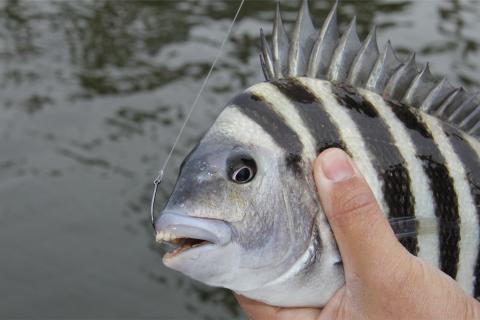
If we base sport-fish popularity on abundance, aesthetics, and tasty table fare, the sheepshead checks off all the boxes. No doubt, this coastal/inshore favorite deserves its desirable status, but bagging a limit takes focus and strategy.

Sheepshead belong to the porgy family and are sometimes called the “Convict Fish,” as much for their black and white banding as for their thieving ways. The species is often confused because the stripes many times resemble those of a juvenile black drum. Black drum is another inshore species with much greater size potential, that can look a lot like a sheepshead. To tell the difference, count the stripes: Drum will have four to five, while a sheepshead has six to seven.
Other distinctive characteristics include the sheepshead’s stiff, sharp dorsal spines that leave painful reminders when carelessly handled. And don’t overlook those protruding sheeplike front teeth, along with stout grinding molars — ideal for nibbling crunchy stuff.
Finding the Right NEIGHBORHOOD to Fish for Sheepshead
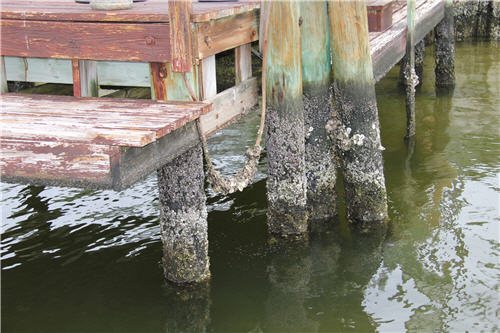
Considering the sheepshead’s dental equipment, it doesn't take long to realize this fish is built for cracking crustacean and bivalve meals. Barnacle- and oyster-laden bridge and pier pilings, as well as seawalls all, attract loads of sheepshead. Still, docks present the most abundant and easily accessed habitat features. Residential canals are often target-rich environments but don’t overlook the ones facing open bays.
Look for docks with multiple structural elements, as this promises lots of feeding opportunities. Older piers with broken beams and random clutter will challenge your casting and complicate fish extraction. Still, these crumbling relics can be sheepshead gold mines.
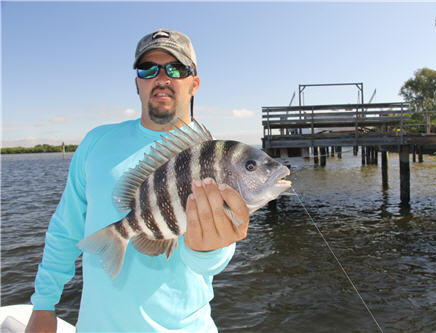
You’ll also find these fish on oyster bars, rock piles, channel edges, and shallow reefs (natural or manmade) inside bays and along coastal areas. Available year-round, sheepshead gather in huge spawning aggregations from December-March.
Like most predators, sheepshead feed best on moving water, but consider that a boiling tide pins them closer to structure, so your presentations have to be more precise. It’s also more challenging to control your rig and detect bites in swift water, so look for your better opportunities during moderate tidal flow.
Best BAITS to Catch Sheepshead
The great thing about sheepshead is that they’ll readily gobble a variety of baits you can easily collect in shoreline/nearshore habitats. Most obvious are the oyster colonies growing throughout coastal shallows. These and other bivalves such as mussels and clams require a laborious gathering and shucking effort. Still, the meat is absolutely irresistible to sheepshead, while crushing the shells with the top edge of a hammer creates an enticing chum.

Live shrimp also attracts plenty of sheepshead interest, but this one has a couple of drawbacks. First, shrimp is a delicate fishing bait that’s easily pecked away when hooked under the forehead horn, as is often the case for redfish, snook, and trout pursuits.
Pinching off the tail and threading a shrimp onto a hook or a light jig head is a better play, as it brings the hook point closer to a sheepshead’s mouth. Nevertheless, pinfish, pufferfish, and other trash fish may reach the meal before your targeted species.
In most cases, small crabs are your best option for tempting sheepshead with a practical presentation. Common choices include fiddler crabs, the dime shaped “mud” crabs you’ll often see hiding amid oyster mounds, or the mangrove crabs that scurry along the sides of docks and red mangroves. Catching your own can create a time-consuming chore. Look for coastal bait shops they typically offer fiddlers, at least during the peak season.
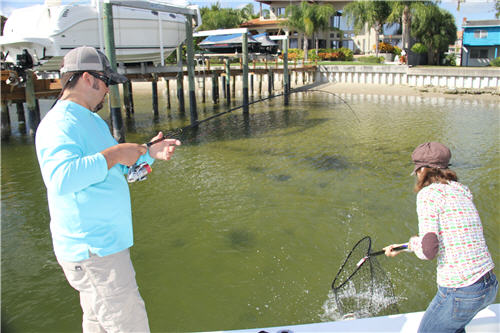
Whatever species you use, fish the crab on a 1/0 light wire cutting point fish hook set through the very outer tip of its shell. You want your bait to remain lively for maximum appeal, so avoid piercing the organs and killing the bait. The cutting point style tends to stand up to the sheepshead’s stout teeth better than a needle point, which may bend and prevent a reliable connection.
3 Effective Sheepshead Fishing Presentations Include
Rigging it right includes:
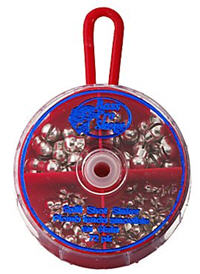
Split Shot Lead-Free Weight
Assortment
Free Lined:
Sending a bait into duty with nothing but a hook is ideal for close-range targets in shallow, still water, as the bait falls with a natural motion. As the depth and/or current increase, you’ll need to add a split shot for an effective fall rate. Also, on clear days with high visibility, you may find the bigger sheepshead shying away from the company. Crimp on a split shot and increase your casting distance.
Jig Head:
While slip sinker rigs work well for deeper spots with a relatively clean bottom, think about the rough, snag-prone habitat in which sheepshead do most of their work. You’ll see that a jig head’s more streamlined form keeps your bait, hook, and weight conveniently gathered in one manageable package. Jig head weight varies based on depth and current, but a 1/8- to 1/4-ounce generally fits the sheepshead zone, while you may need to go as big as 1/2 for a stronger current.
Dropshot:
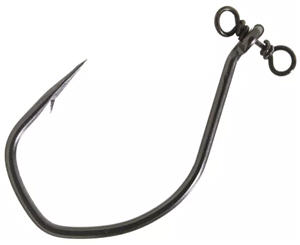
When a sheepshead is holding over a deeper structure, you may not feel comfortable dropping right into their fortress. Here, a version of the dropshot rig popular with bass anglers holds your bait in a vulnerable position where sheepshead can’t miss it.
You can tie your dropshot rig, but you’ll find a more convenient option with the VMC Spin Shot hook. Comprising a metal stem with a free-spinning 2/0 hook and swivels at both ends for the main line and weight leader, the Spin Shot minimizes line twist and allows your bait 360-degree range of motion.
Gear Up With the Right Fishing Tackle
Average size sheepshead weighs in at about 2-3 pounds, with quality fish of 5-plus pounds becoming much more common during the spawning season. Double-digit fish are rare, but they could show up just about any time, so make sure you’re equipped to handle whatever bites.

Reel Spinning Combo
A 7-foot medium spinning outfit like the PENN Battle II Inshore Rod & Reel Combo with a 30-pound braided main line and 18-24 inches of 20-pound fluorocarbon leader will do the job — if you do yours. Sheepshead are notoriously difficult to hook because anglers accustomed to that sharp “bump” followed by a steady pull, are usually left confused.
Simply put, the consistent connection comes by understanding how sheepshead feed. Barnacles, crabs, and small bivalves all require cracking before eating. So think of it this way: The first tap is the fish crushing its meal, and the second tap is the fish sucking in the more vulnerable inner goodies.
What does this mean to the angler? First, rapid response aided by braided line’s unyielding composition might allow you to sneak that hook into a sheepshead’s mouth on the first tap. The key is how you respond — don’t jerk, just reel until you come tight.
If your opponent catches you off-guard, don’t sweat it; wait for that follow-up tug, reel your line tight and then drive the hook home. The whole thing happens in a matter of seconds, but once you get the hang of it, you’ll quickly find yourself with a pile of tasty fillets.
They’re not easy to catch, but the sheepshead’s excellent table fare make it well worth the effort.
- 18401 views

